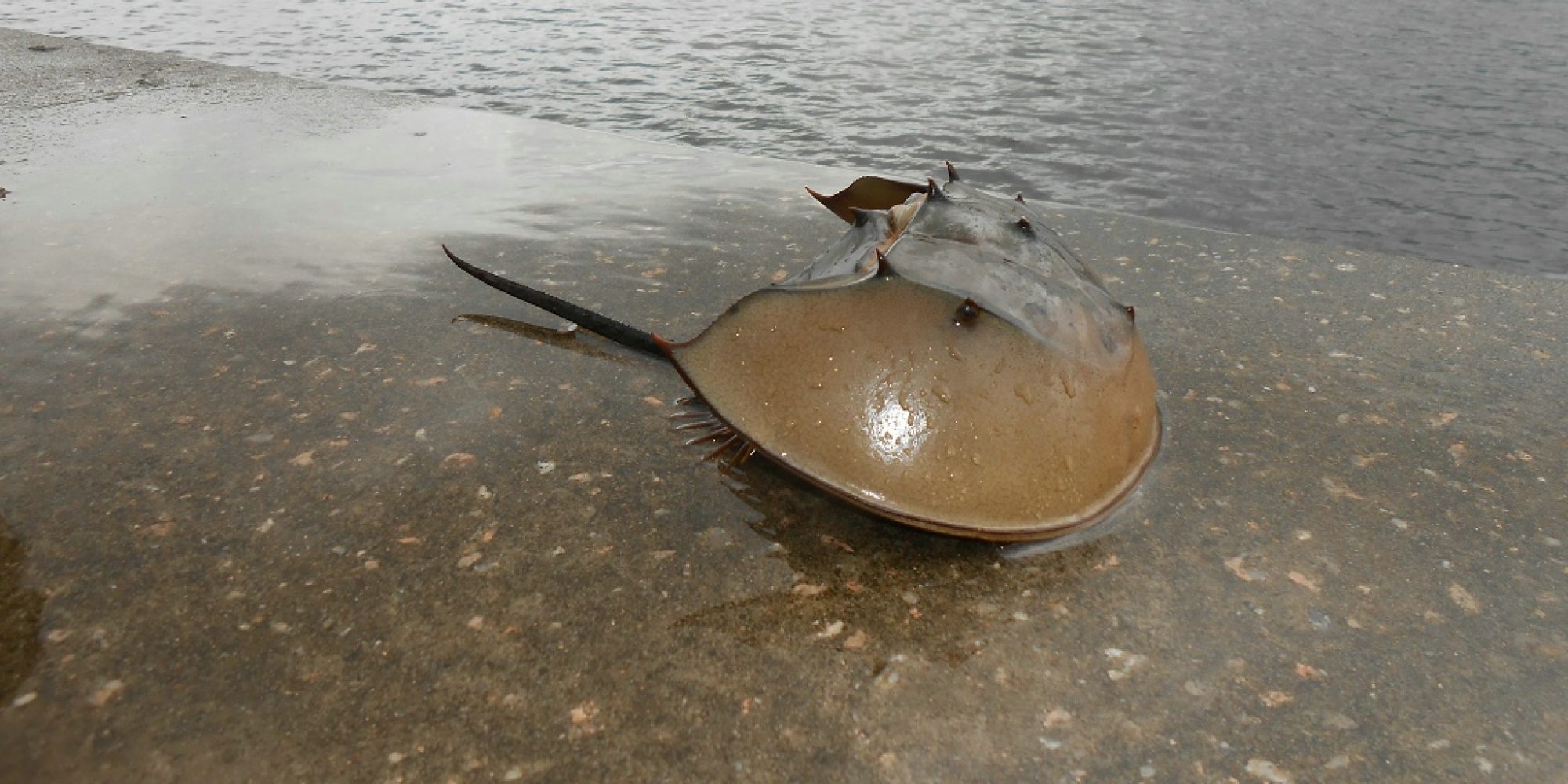The body of horseshoe crabs is divided into three parts: the front section – prosoma, the middle section – opisthosoma, and the tail – telson.
The prosoma is the largest section of the horseshoe crab’s body. Its dome shape resembles the shape of a horse’s shoe, that’s where they get their name “horseshoe crab”. From a top view, two compound eyes can be found on the exterior of the prosoma, which are used for finding mates during the spawning season. Directly behind each compound eyes is a rudimentary lateral eye which is very sensitive to light for finding other horseshoe crabs in the dark. There are also two median eyes and one endopariteal eye located on the front of the prosoma, which are used to detect sunlight as well as moonlight. This helps the crabs in following the lunar cycle to spawn.
On the ventral side, six pairs of appendages can be found. The first pair near the mouth is the chelicerae, which are used for feeding. The other five larger pairs of legs are for locomotion on beach floor. When mature, the front pair of legs of a male crab change shape on their terminal molt to a hook-like claspers, which are used for grasping the female during mating. There are also two eyes near the mouth of the crabs, which may help in orienting the crabs when swimming.
The opisthosoma is the abdomen of a horseshoe crab where its gills can be found. They are important for gaseous exchange and are called book gills because of the page-like appearance of integument’s folds. Six pairs of gills can be found along the ventral side of the opithosoma. In addition, a row of hard spikes can be found along the two edges of the opisthosoma.
The telson is a useful tool for horseshoe crab to turn themselves right side up when overturned. Horseshoe crabs also use the telson for steering and digging on the beach. A cluster of photoreceptors is located on the telson to synchronize light/dark cycles with the brain. Although it may look intimidating, it is not a venomous stinger like that of a scorpion. In fact, the telson is very fragile and we should never pick up a horseshoe crab by its tail.
→Differentiate the two species of horseshoe crab found in Hong Kong
